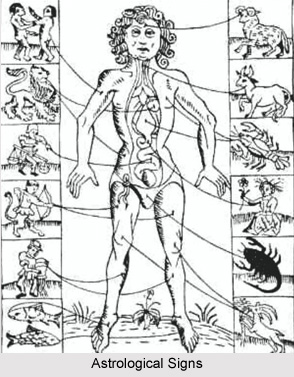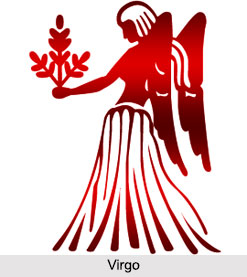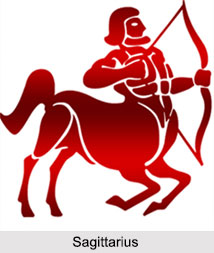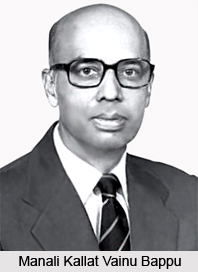 M. K. Vainu Bappu also known as Manali Kallat Vainu Bappu was a prominent Indian astronomer. He had also been the President of the International Astronomical Union. The contribution of Vaippu in the field of astronomy is of real worth. He had established several astronomical institutes in India including an observatory with the name "Vainu Bappu Observatory" and an institute of astro-physics in India. In collaboration with American astronomer Wilson Chaddock, Vappu had discovered the Wilson-Bappu effect in the year 1957. He is also known as the father of modern Indian astronomy.
M. K. Vainu Bappu also known as Manali Kallat Vainu Bappu was a prominent Indian astronomer. He had also been the President of the International Astronomical Union. The contribution of Vaippu in the field of astronomy is of real worth. He had established several astronomical institutes in India including an observatory with the name "Vainu Bappu Observatory" and an institute of astro-physics in India. In collaboration with American astronomer Wilson Chaddock, Vappu had discovered the Wilson-Bappu effect in the year 1957. He is also known as the father of modern Indian astronomy.
Early Life of M. K. Vainu Bappu
M. K. Vainu Bappu was born on 10th of August 1927. He was born to an astronomer father who was a senior astronomer in the Nizamiah Observatory in Hyderabad. Right from his early student days Bappu was a brilliant student. As a child he not only took part in studies but he was equally interested in other curricular activities which included debates and various sports. As his father was an astronomer, Bappu was exposed to astronomy at quite an early age. From a very young age, astronomy had become his passion. Bappu as a graduate student of astronomy had published a number of papers. He had received his post graduation degree from the University of Madras and had received a scholarship to join the Harvard University for his prestigious Phd Degree.
Contributions of M. K. Vainu Bappu
It can well be said that Bappu was an astronomer of contemporary India whose contributions to India in the field of astronomy was huge. Soon after joining Harvard along with his colleagues Bappu had discovered the Bappu-Bok-Newkirk comet. For such a path braking discovery Bappu was awarded the Donhoe Comet-Medal by the Astronomical Society of the Pacific. After completing the Phd Degree in 1952 Bappu had joined the Palomar Observatory on the prestigious Carnegie Fellowship. It was in this Observatory that Bappu along with Wilson had found out the Wilson-Bappu effect. In the Wilson-Bappu effect Colin Wilson and Vainu Bappu had discovered a relationship between the luminosity of particular kinds of stars and some of their spectral characteristics. This effect discovered by Bappu is generally used to determine the luminosity and distance of these kinds of stars.
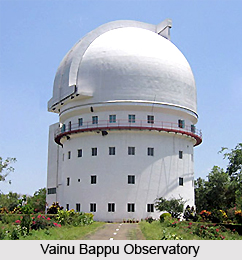
On his return to India, in the year 1953, Bappu was appointed as the head of a team to build an Observatory in Nainital. Along with his team he had set up the Uttar Pradesh State Observatory in Nainital. In the year 1960 Bappu had left Nainital and had joined the Kodaikanal Observatory as its Director. It was Bappu who had brought about modernisation in the Kodaikanal Observatory. Today the Observatory is well equipped and a lot of discoveries and important observations are carried out from this observatory. Bappu was of the opinion that the Kodaikanal Observatory was unsuitable for any kind of stellar observation so he wanted to make arrangements which would enable stellar observations. With his continuous efforts an Observatory had come up in Kavalur with the facility of an indigenous optical telescope and a stellar observatory. The Observatory was inaugurated by Rajiv Gandhi in the year 1986. He had named the Observatory as Vainu Bappu Observatory. The Observatory was one of the main observatories of India and a notable institute of astrophysics.
Achievements of M. K. Vainu Bappu
M. K. Vainu Bappu was honoured by the Astronomical Society of the Pacific with Donhoe Comet Medal in the year 1949. He was made the President of the International Astronomical Union in order to honour his extraordinary talent and expertise in the field of Astronomy. He also served as the Vice-President of International Astronomical Union from 1967-73. He was the Honorary Member of American Astronomical Society and Honorary Foreign Fellow of Belgium Academy of Sciences.
M. K. Vainu Bappu died on 19th of August, 1982.
